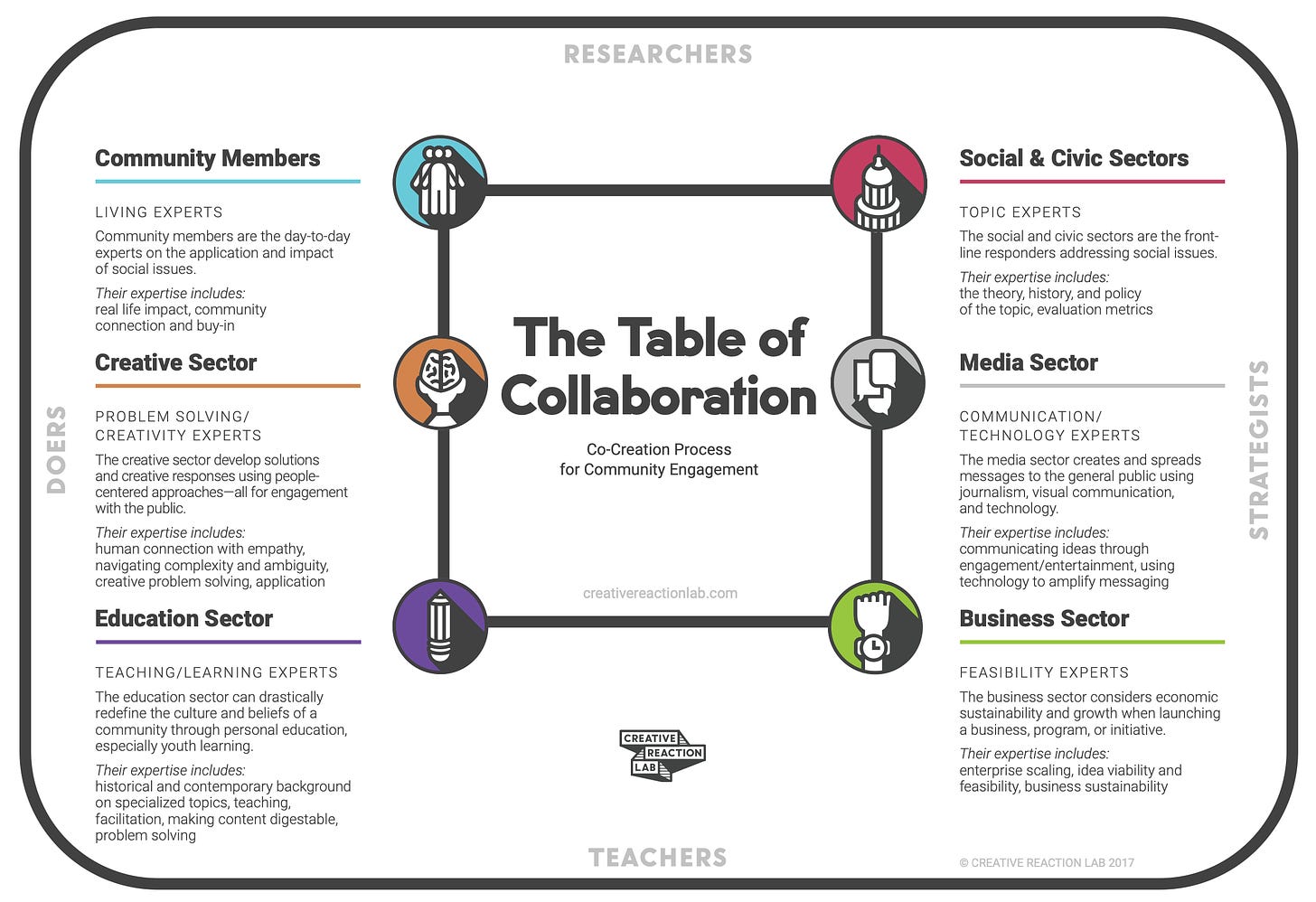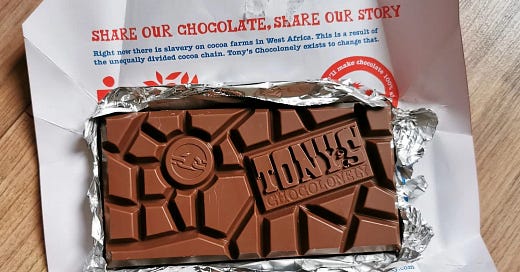This week’s Design Lobster is calling out some examples of design that has helped to advance the cause of justice in the world. From the inspiring work of Antionette Carroll and Creative Reaction Lab to a chocolate bar with a powerful anti-slavery message 💪
✨Enjoying Design Lobster? Please share it with a friend, colleague or fellow designer.
Question: How can we use design to deliver social justice?

Antionette Carroll founded Creative Reaction Lab in St. Louis, Missouri in 2014 following the shocking police killing of Michael Brown Jr. in Ferguson that year. She wanted to find a way for designers to use their skills to help promote social justice and equity. The Lab runs programs that aim to train young Black and Latinx designers in what they call Redesigners for Justice, a new kind of design-empowered civic leader.
In 2017 Creative Reaction Lab summarised their ways of working in a handbook called the Equity-Centred Community Design Field Guide. The techniques in the handbook include foregrounding the power dynamics of design activities and including both individual and collective histories and traumas as part of design discovery. I was particularly interested in the framework it sets out for assessing both the potential societal benefits and harms of an idea at prototype stage.
Design takeaway: What concrete ways could you make your design process more equitable?
✍️ Watch Antionette Carroll’s 2014 TED Talk
Object: Tony’s Chocolonely
Tony’s Chocolonely is a chocolate manufacturer started in 2005 by Dutch journalist Teun van der Keuken following his investigation of modern slavery in the chocolate industry. He had discovered how the business practices of the big confectionary manufacturers lead to a cycle of poverty for cocoa-bean farmers in Ghana and Ivory Coast which in turn resulted in slavery and child labour. Determined to prove another way was possible he set up Tony’s, requiring full traceability of all beans used in their bars, a higher guaranteed price and an insistence on working only with farmer collectives where individual farmers had increased bargaining power.
Since then, Tony’s has become the largest the chocolate brand in the Netherlands and is sold across Europe and the United States. It’s a for-profit company hoping to inspire change across the industry by proving its model is a viable one. Recently it has come under fire for discovering child Labour in an audit of its supply chain, but it has argued that this is proof of “traceability” working.
I’m fascinated by the design choices in the bar itself. Those unequal sized segments in the bar make it hard to break apart and eat. You literally feel the unfairness in your fingers, making the anti-slavery message a tangible part of the experience of eating it.
Thanks for reader Joey for reminding me of this great story!
Design takeaway: How could your design communicate its values to those who encounter it?
🍫 Here’s a video telling the story of Tony’s chocolate
Quote: “One of the big problems we're facing now is a normalization and elimination of anything that doesn't fit normative models. Design justice as a proposal and as a set of practices is about challenging that, saying no, and pushing back to say that there are a lot of different types of knowledge. There are a lot of different types of design.”
– Sasha Costanza-Chock, designer and academic
Sasha Costanza-Chock’s book Design Justice explores the relationship between design, power and social justice. This quote, which comes from an interview, is a great reminder of the value designers can bring by enlarging the frame of a discussion to include voices or ways of thinking that don’t often get heard.
May you find the courage to push back this week!
Ben 🦞
Enjoyed this week’s Design Lobster? Let me know by clicking the heart button ❤️
👇




